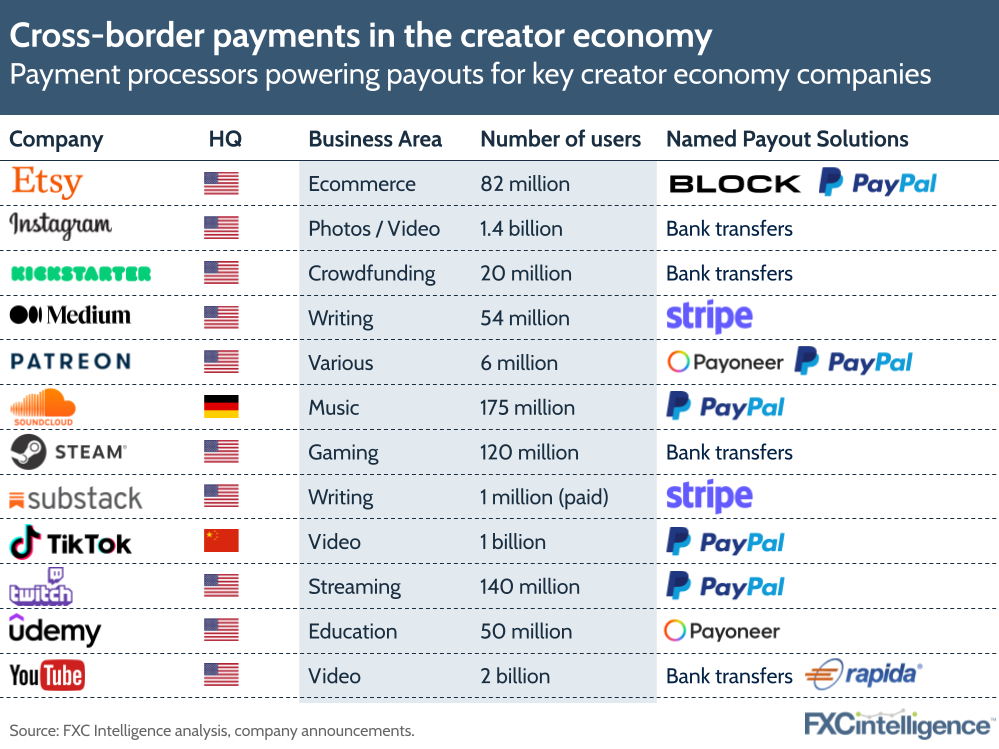The creator economy has emerged from the explosion of entertainment and content creation that we’ve seen over the past decade. Fuelled by a wide array of digital platforms through which creators can monetise their work, growing numbers of people now make a living in creative industries by serving an international audience of consumers or fans.

The exact size of the creator economy now is difficult to determine, although several industry estimates put it at around $100bn. Its rise has been particularly marked over the past two years, with the shift to remote working caused by the pandemic increasing the consumption of entertainment at home via the internet. At the peak of lockdown, leading platform YouTube saw a 500% increase in traffic, for example, while Stripe reported a 48% year-over-year increase in creators in 2020.
This increase has created a new area of opportunity for cross-border payments, as fans look to support their favourite creators financially, no matter where in the world they are located. And while key payment processors are already benefitting, the offerings are in many cases still relatively basic, suggesting there are untapped opportunities in the space.
Notably, the creator economy is expected to see continued strong growth, and there is likely to be increased competition for creators, with payouts providing an area of differentiation for brands. Providers will increasingly need to factor in language and cultural barriers, particularly as they grow globally, which payment processors may be able to offer support with. Speed of payments, not price, is if often a critical requirement (creators do not like to wait to be paid for their already consumed content). Building a network to do this across 200 countries, often with direct connections, is the challenge.
Regulatory and taxation issues also pose market-specific challenges, an issue already reflected in the decision by some companies such as Kickstarter to limit the countries they support. On the flip side, this presents further opportunities for payment processors to offer value-added services similar to those provided by payment service providers to marketplace-based sellers.


